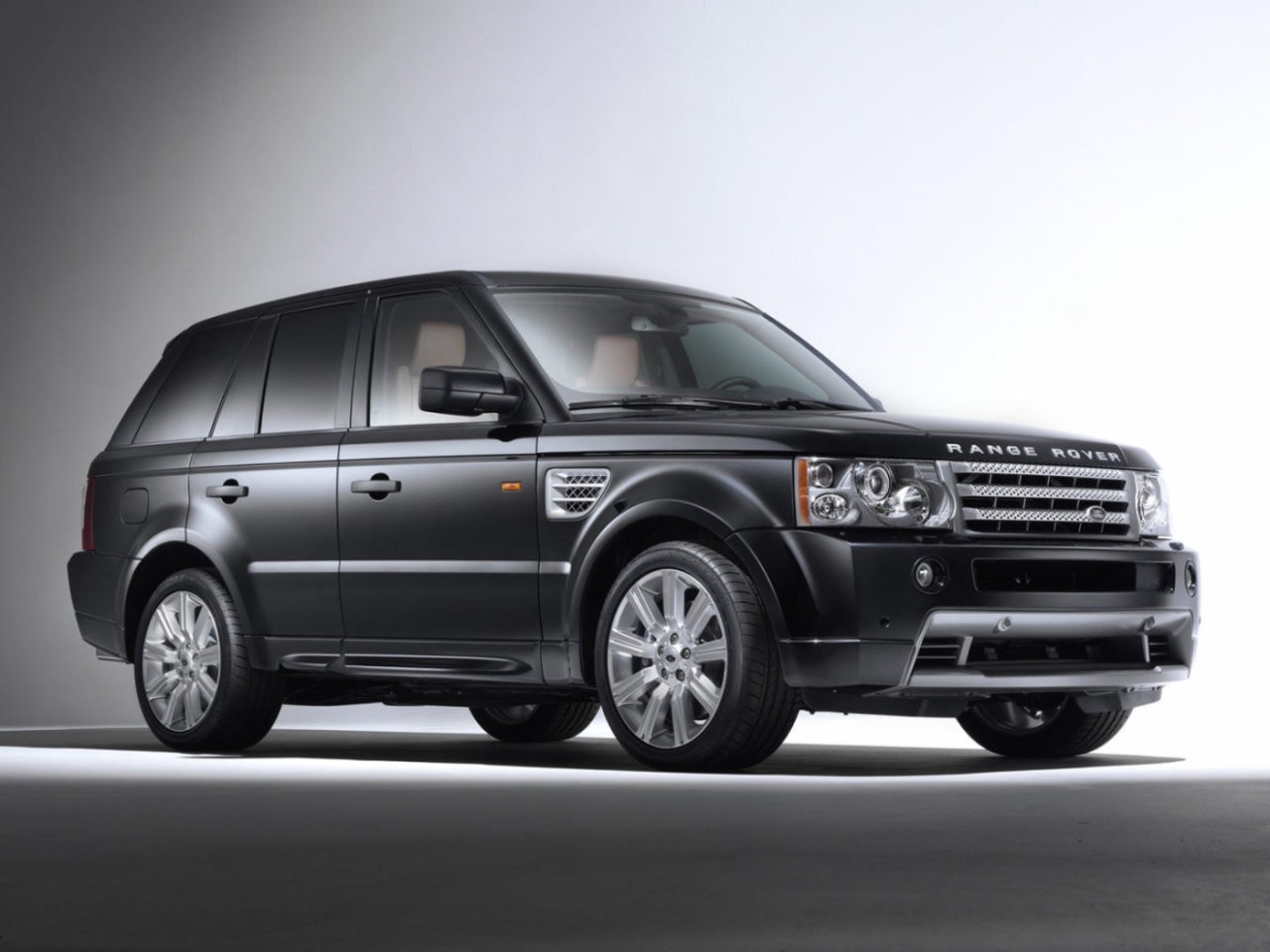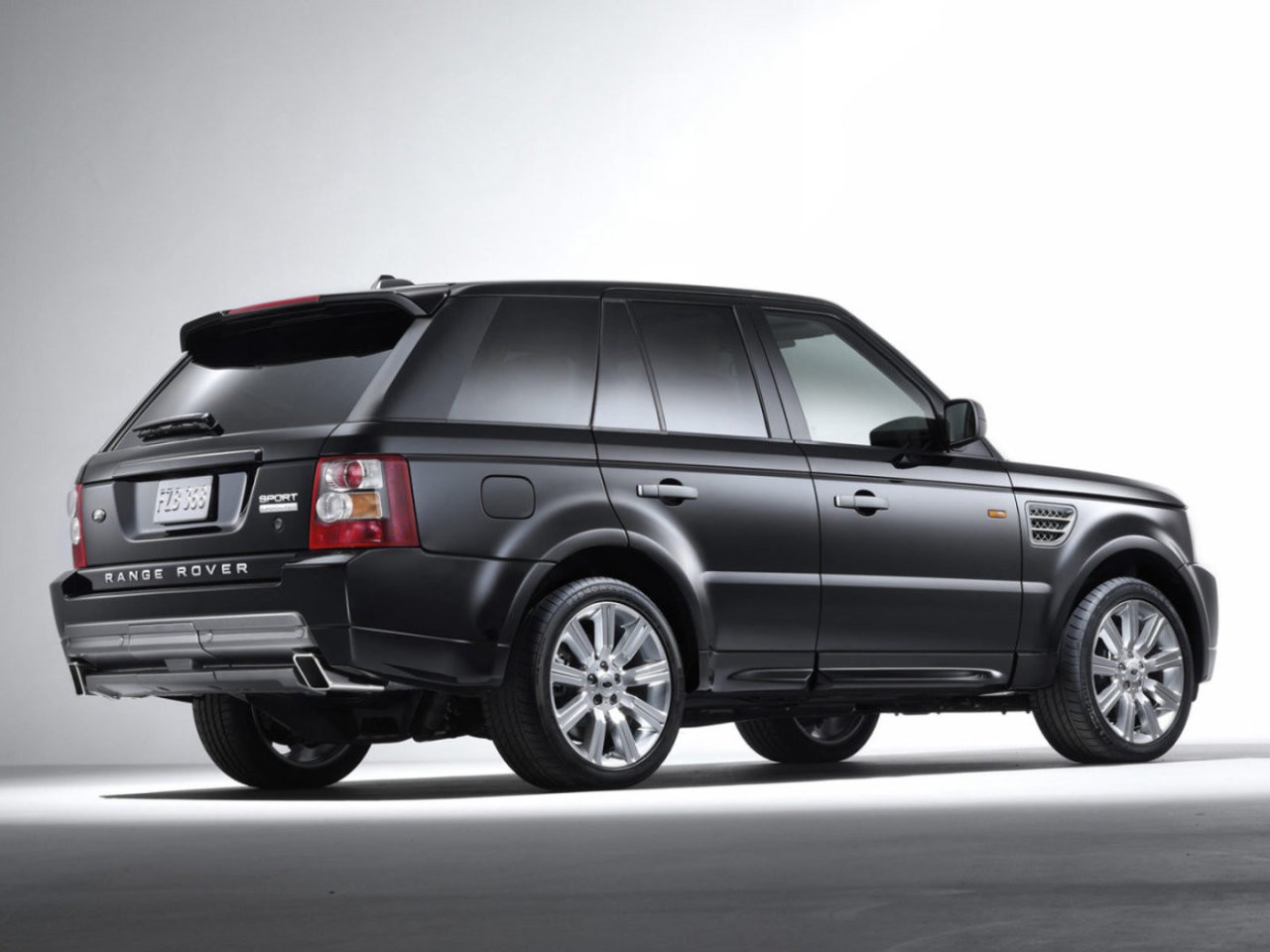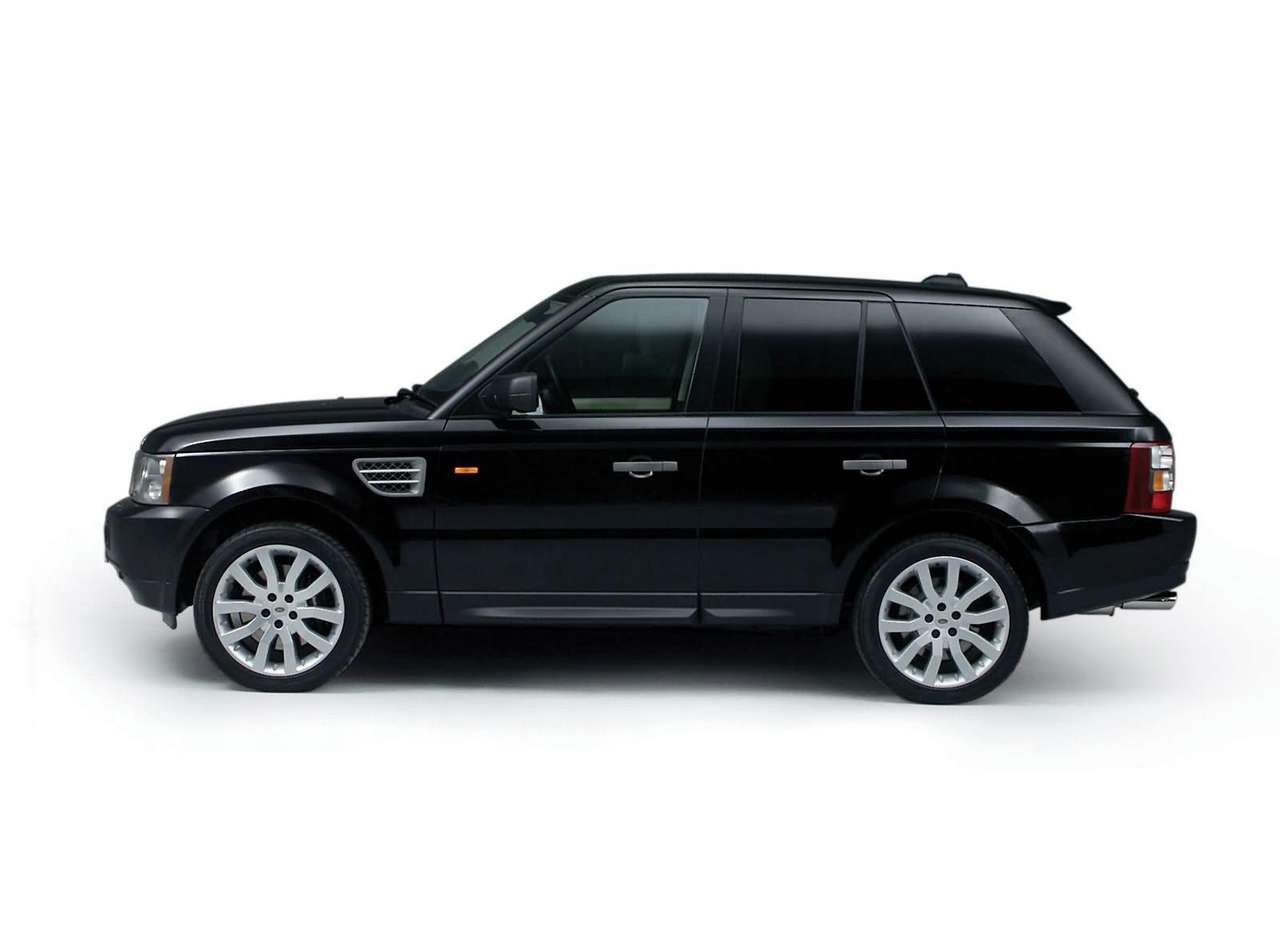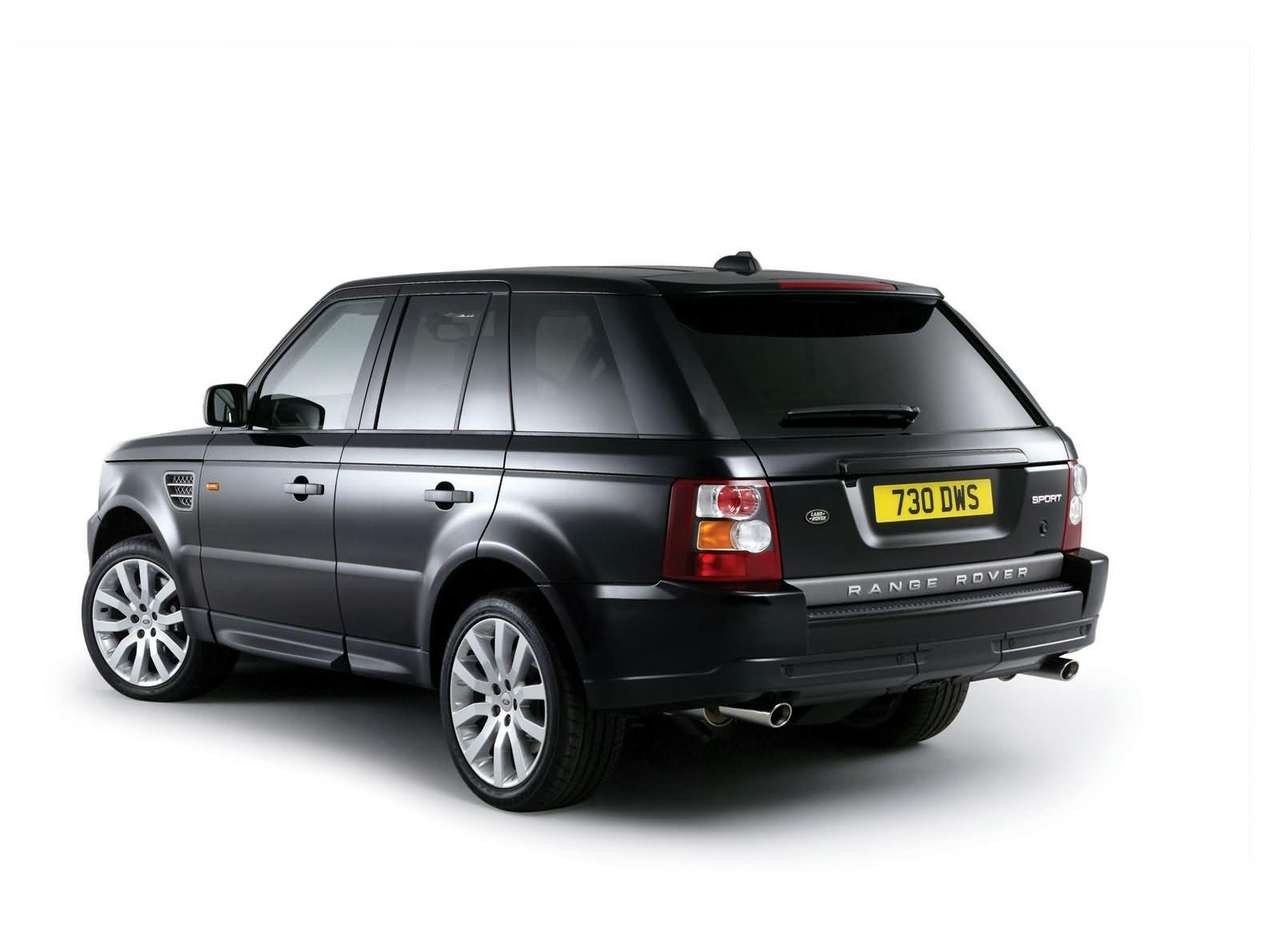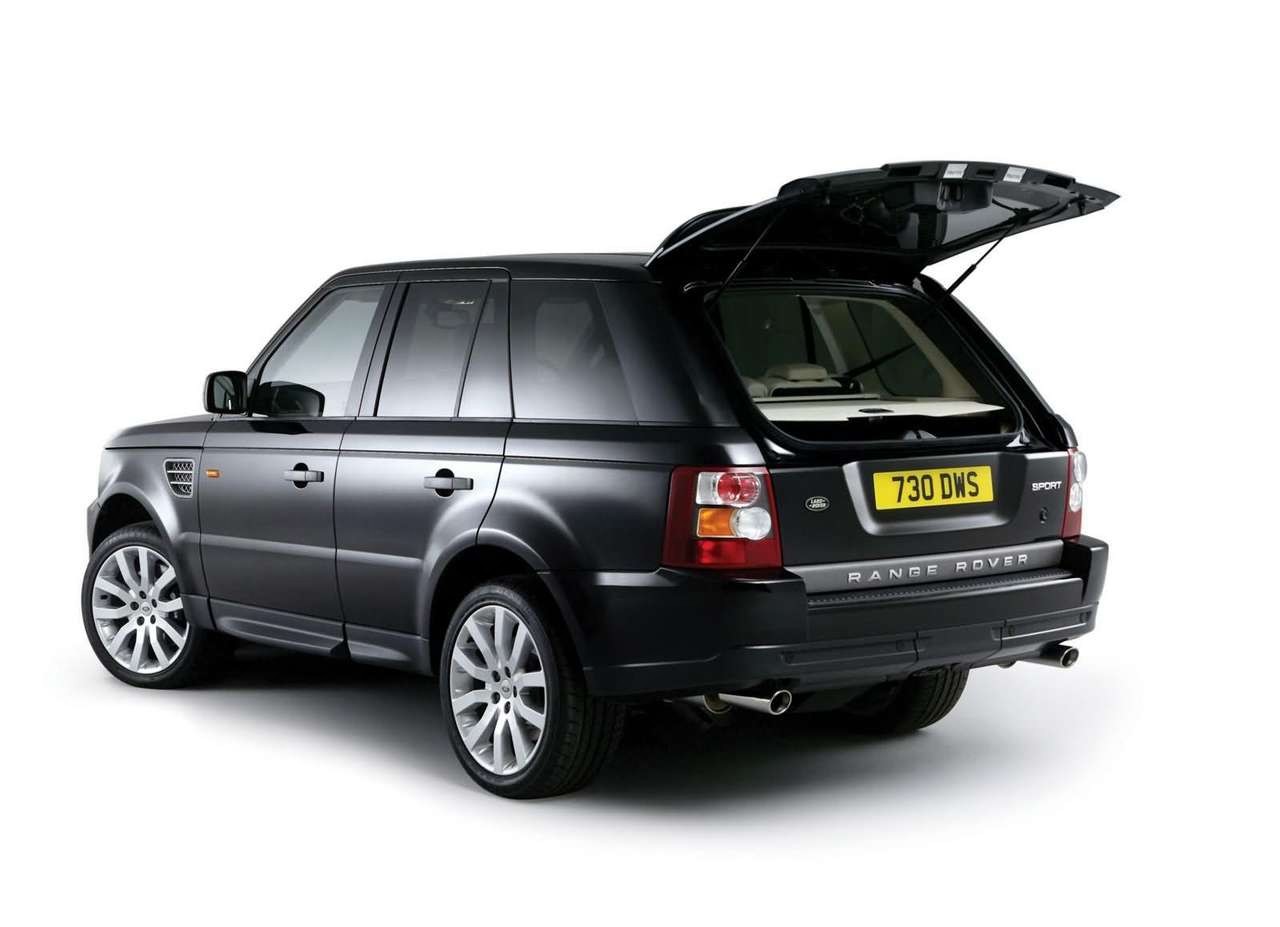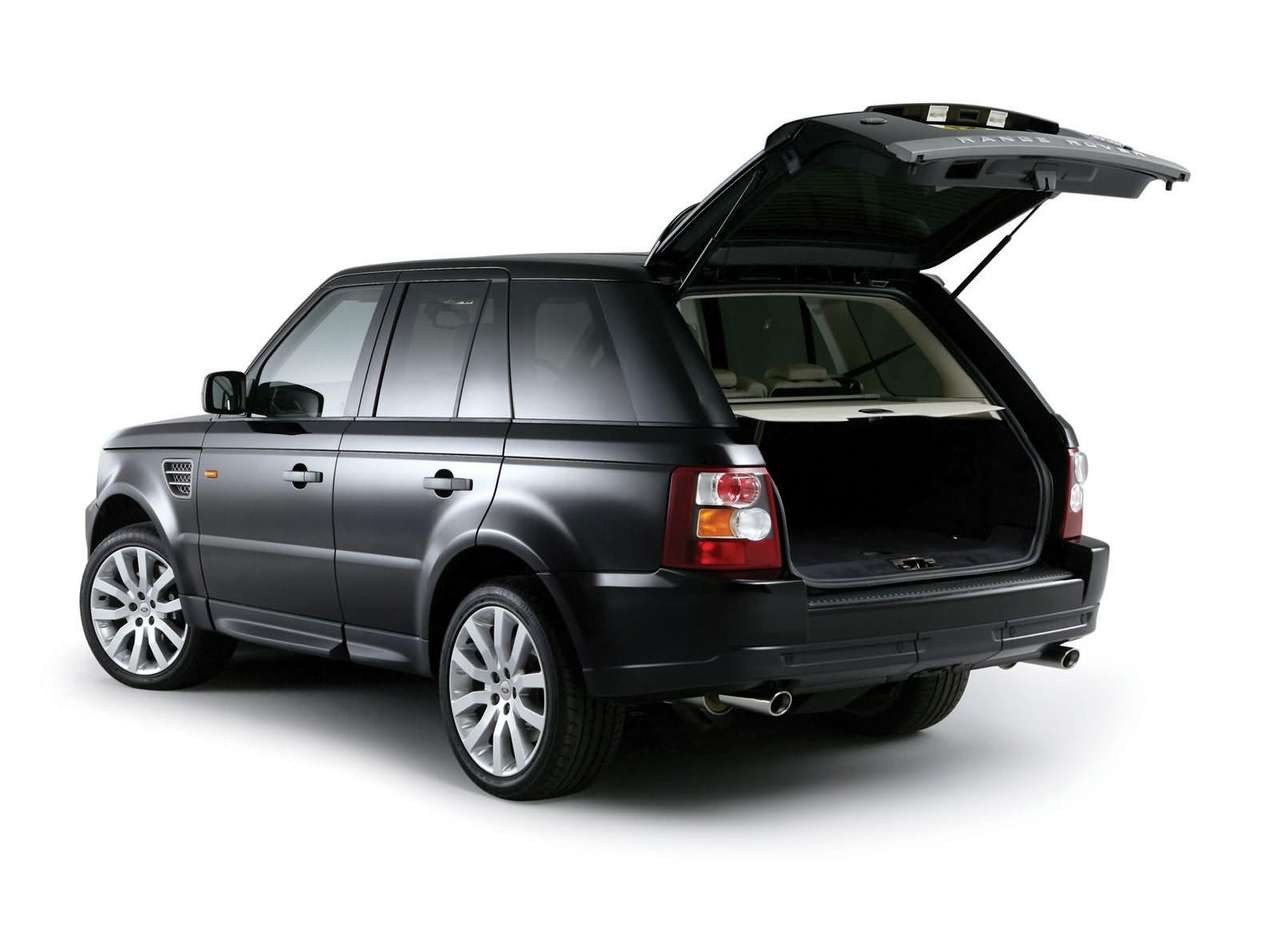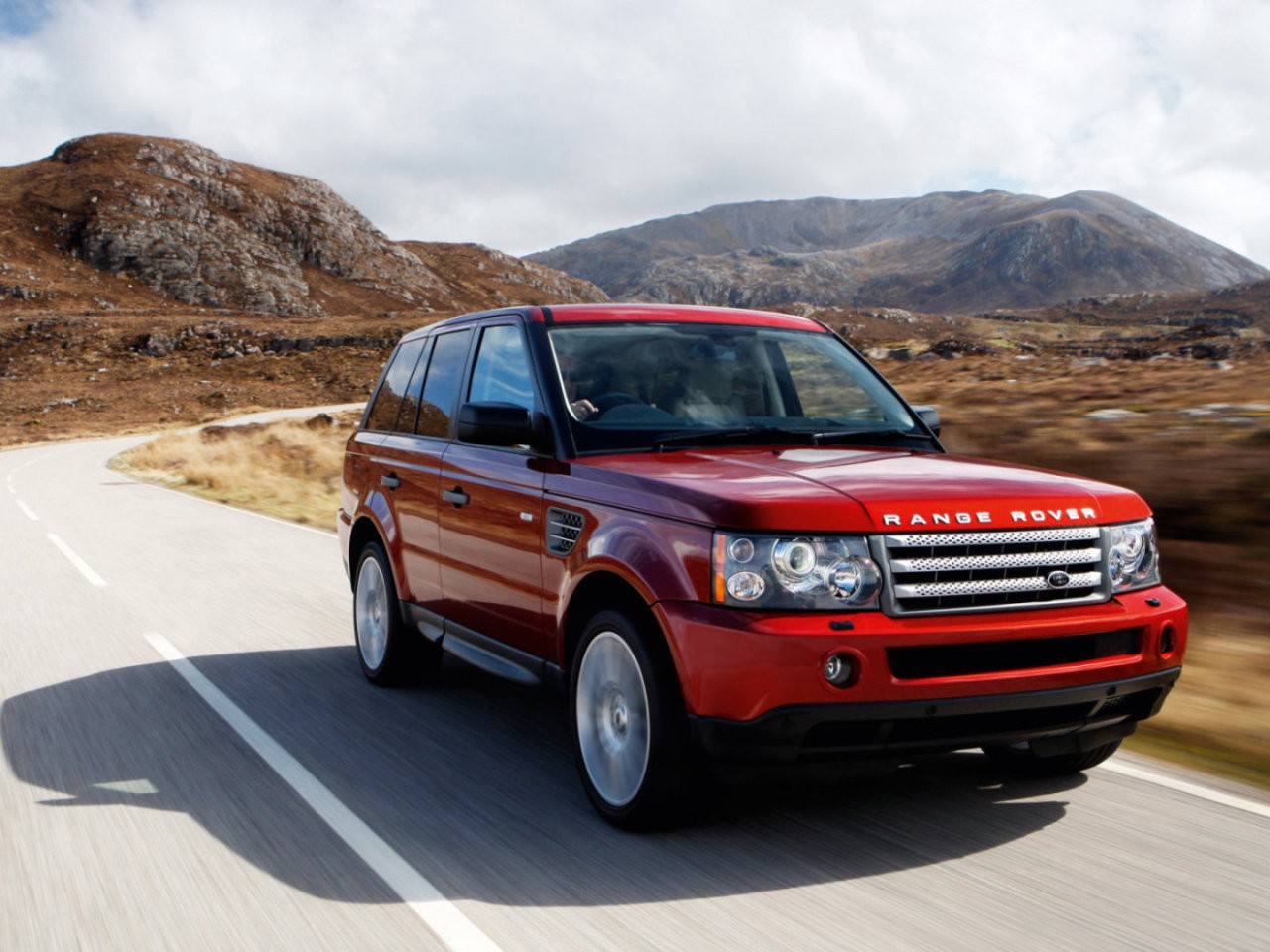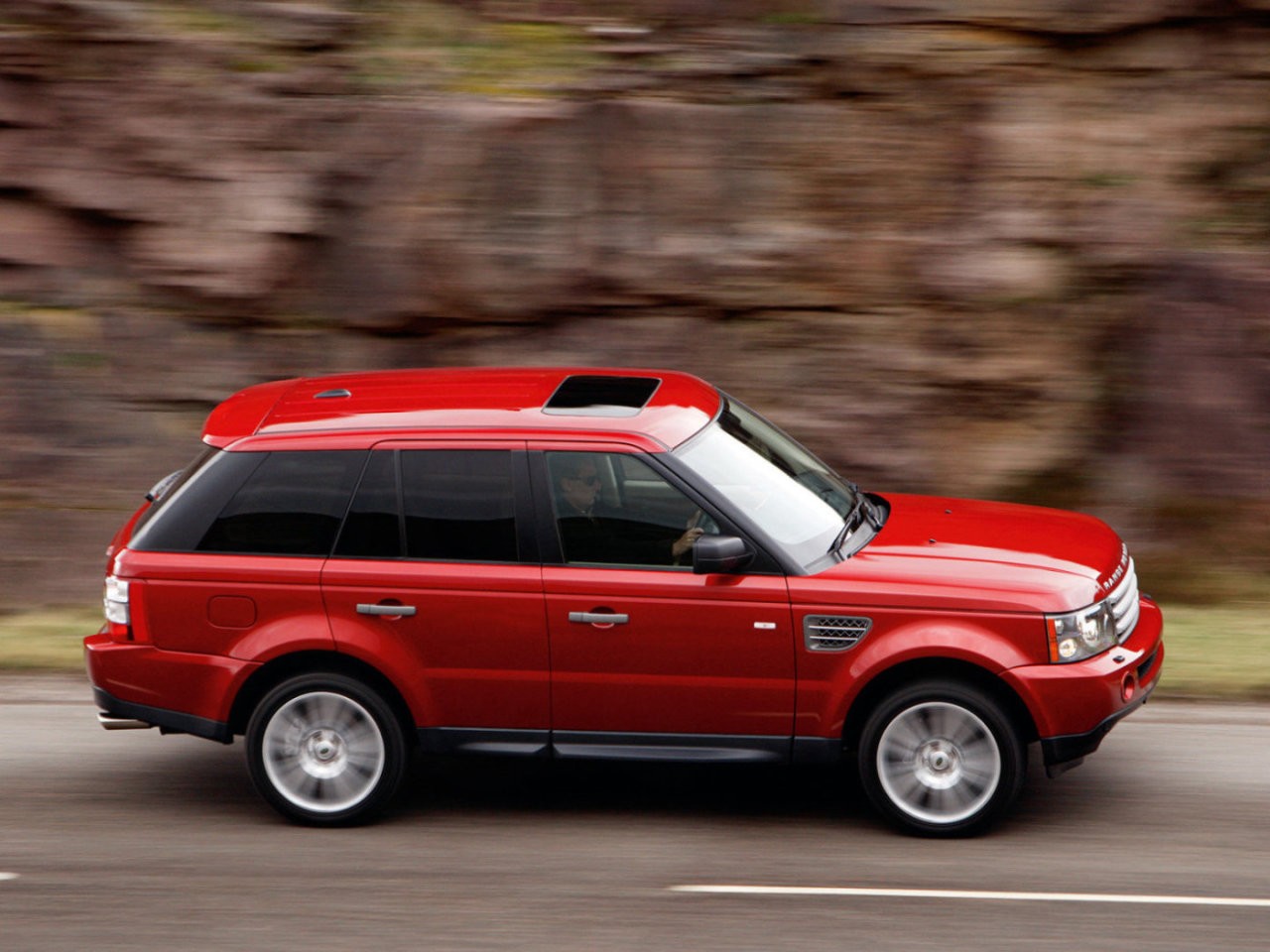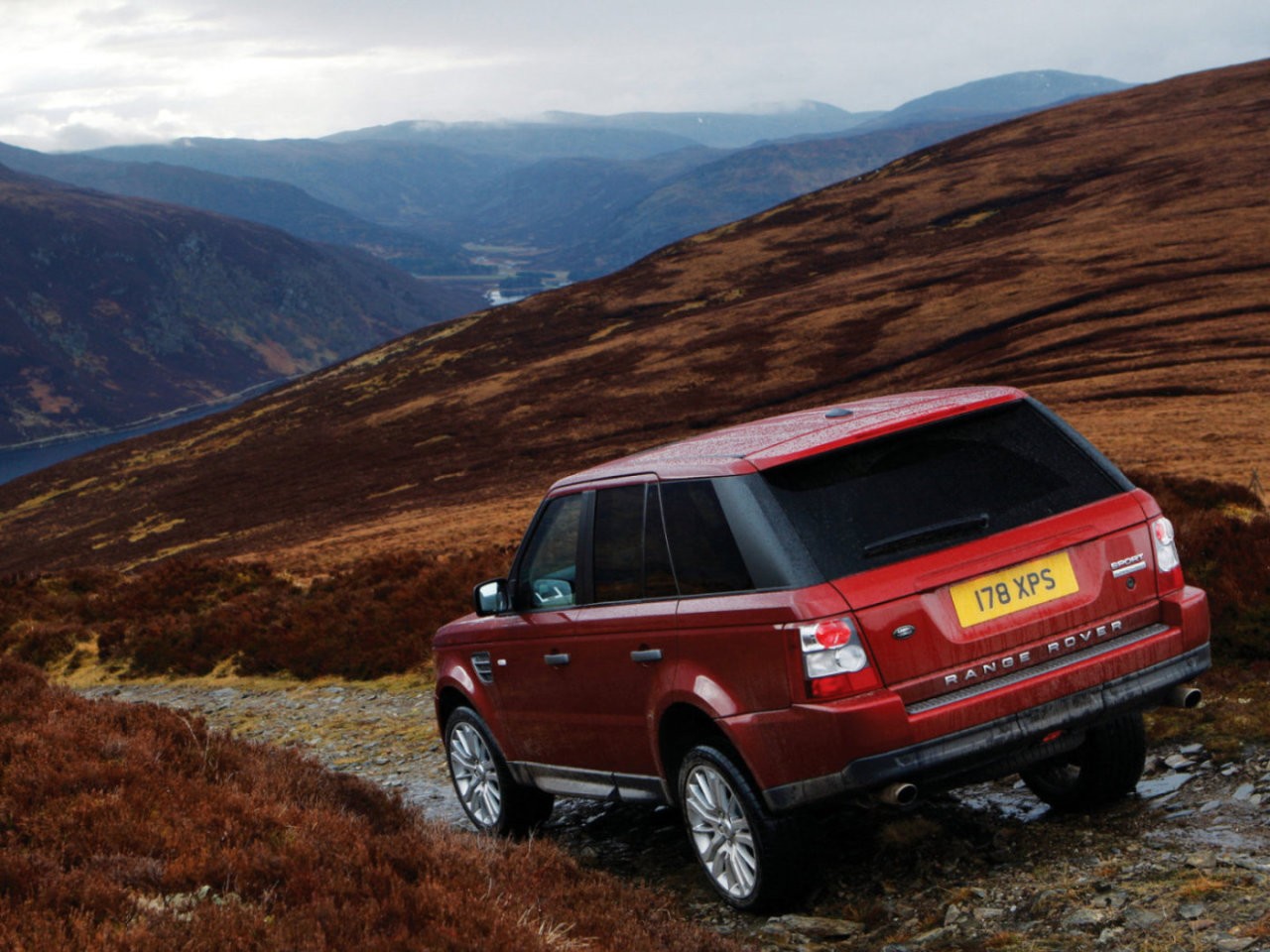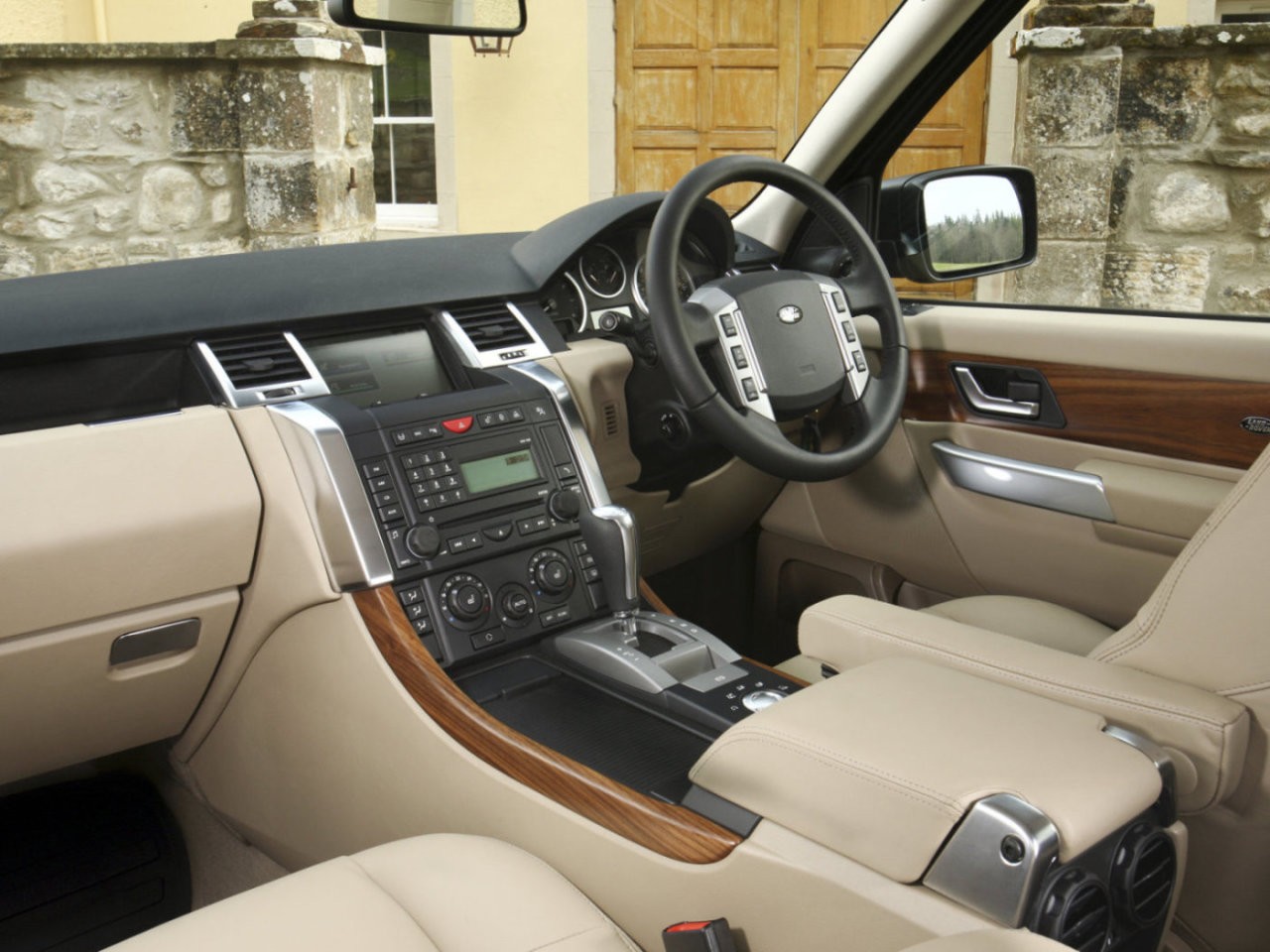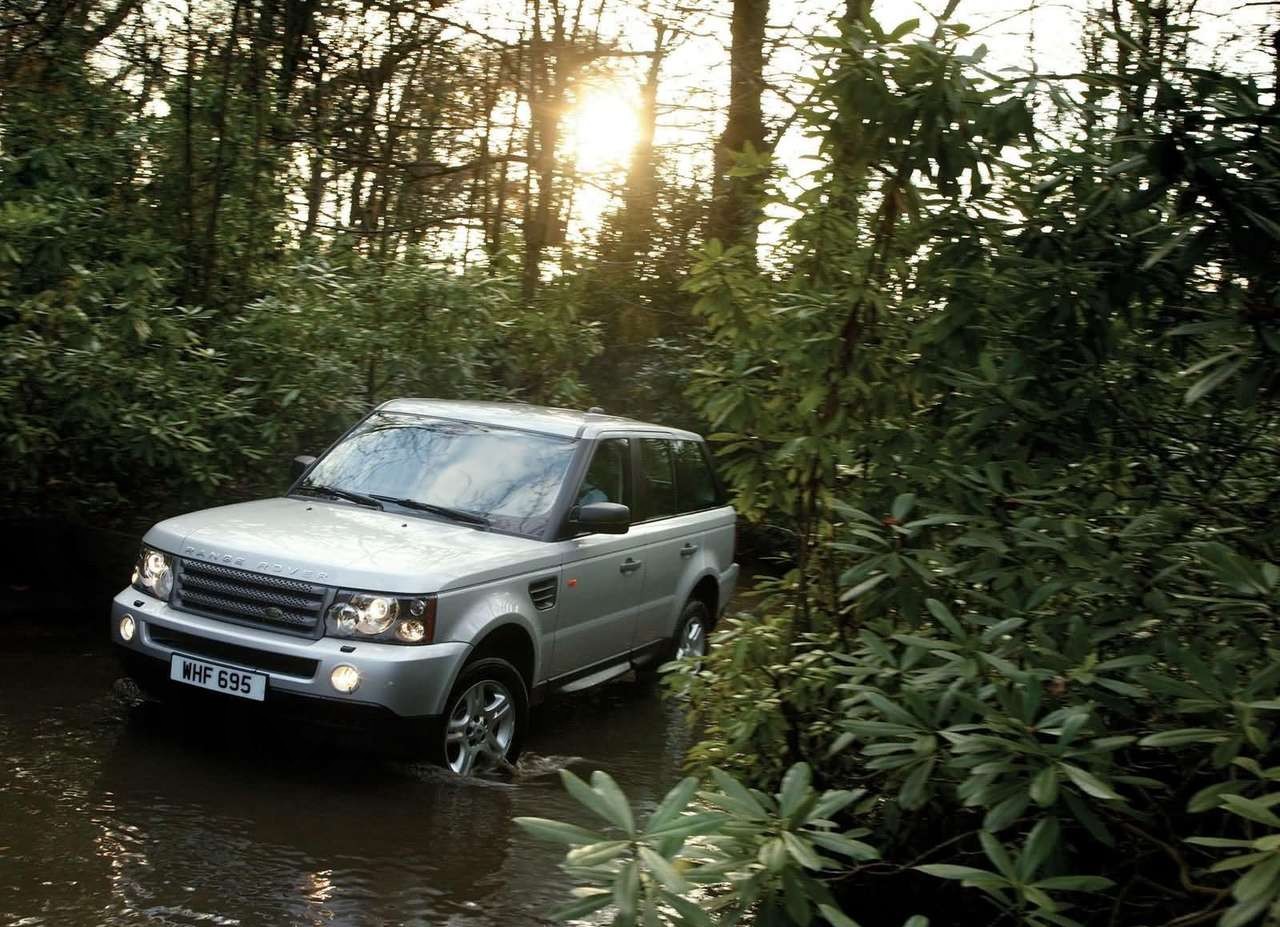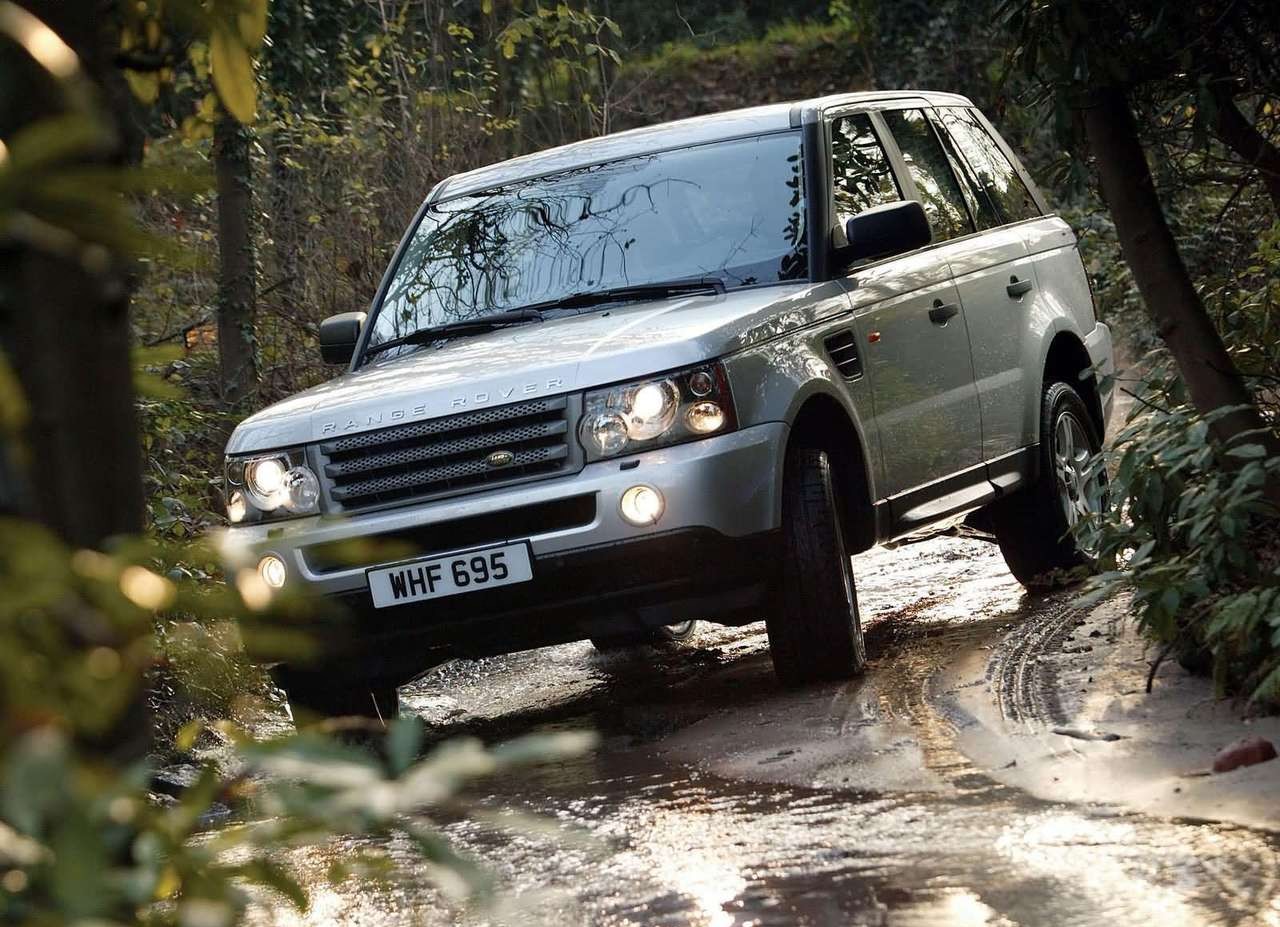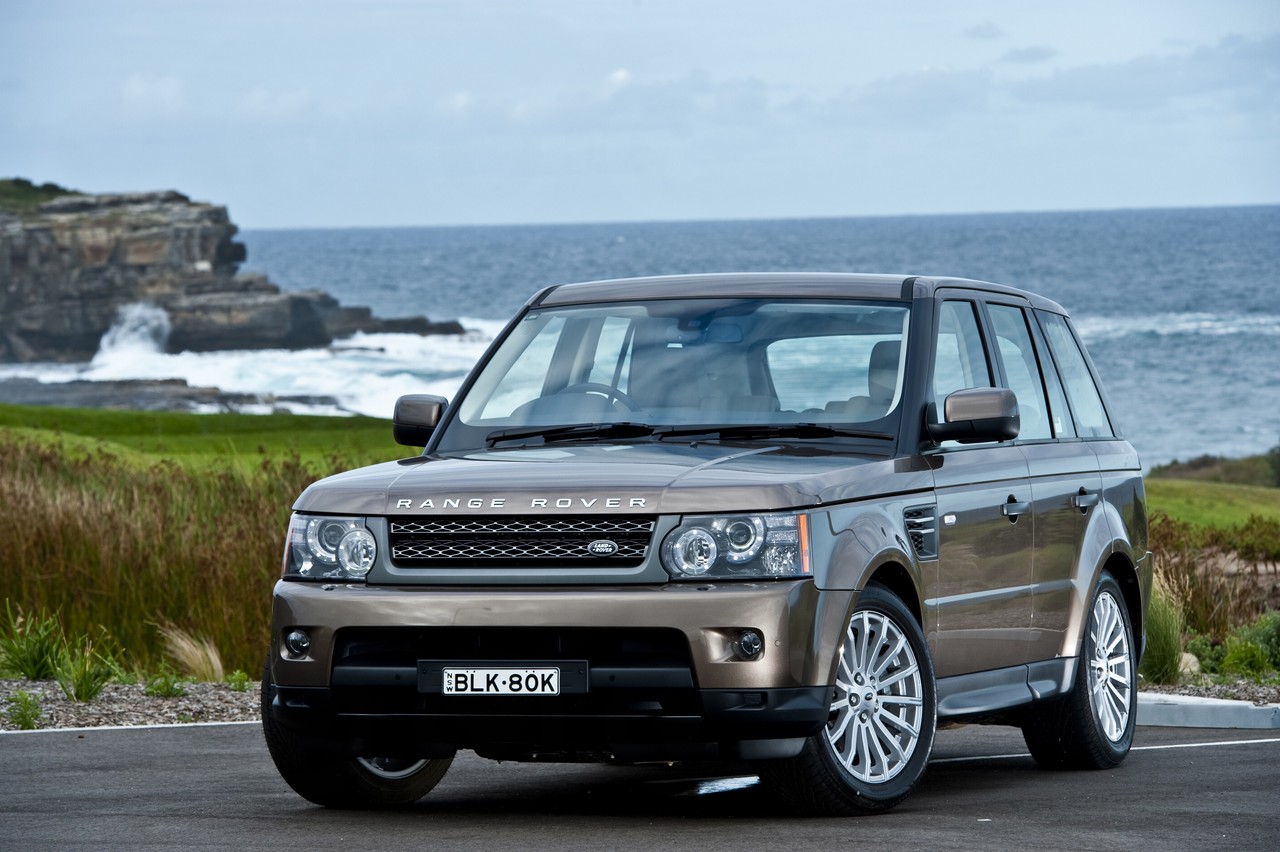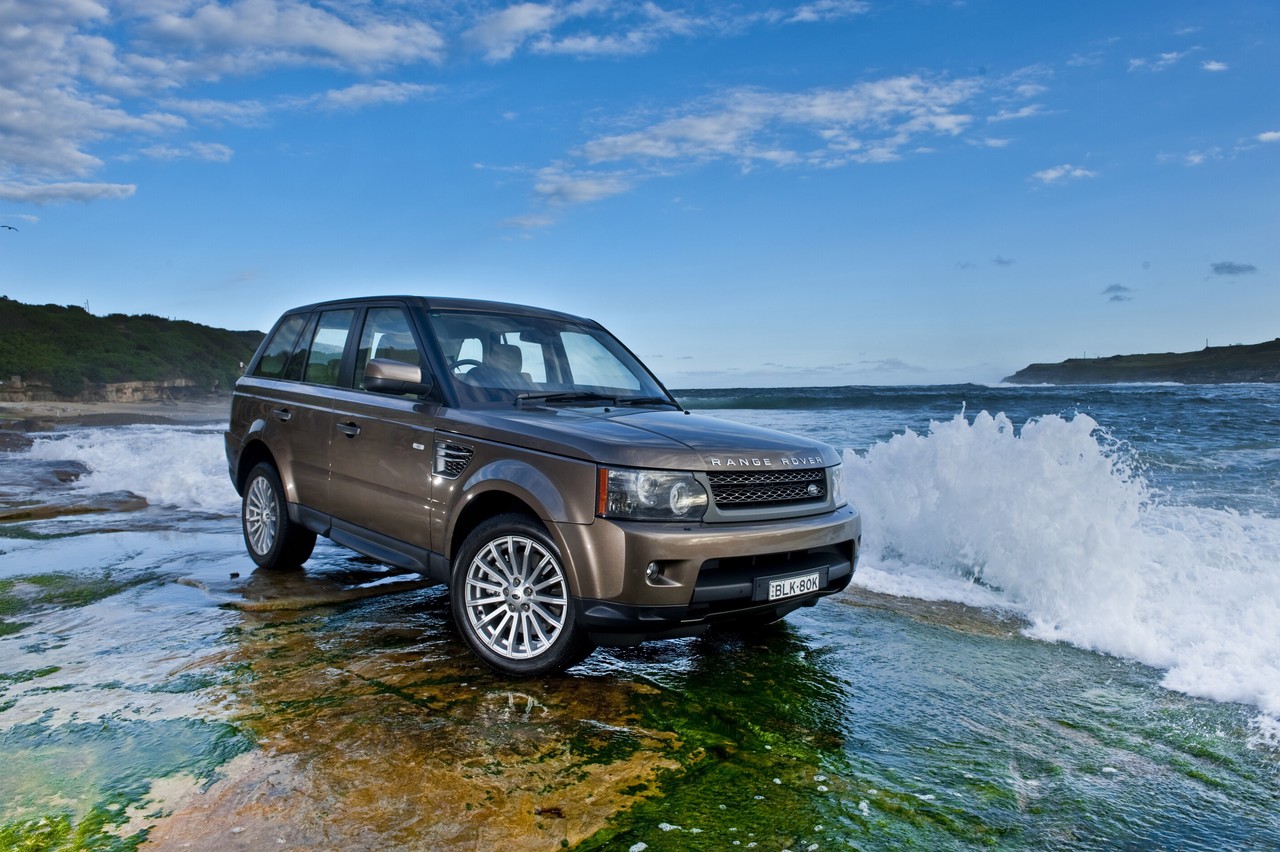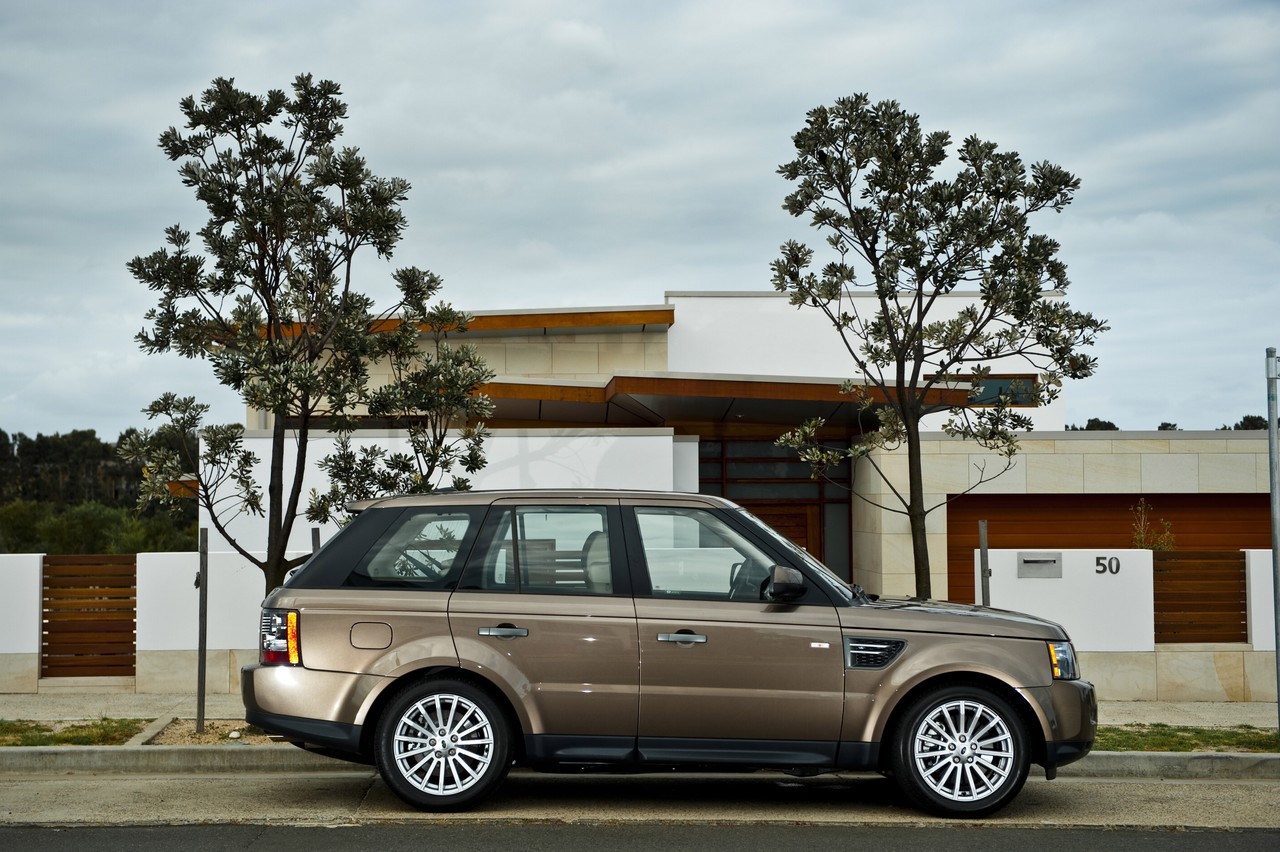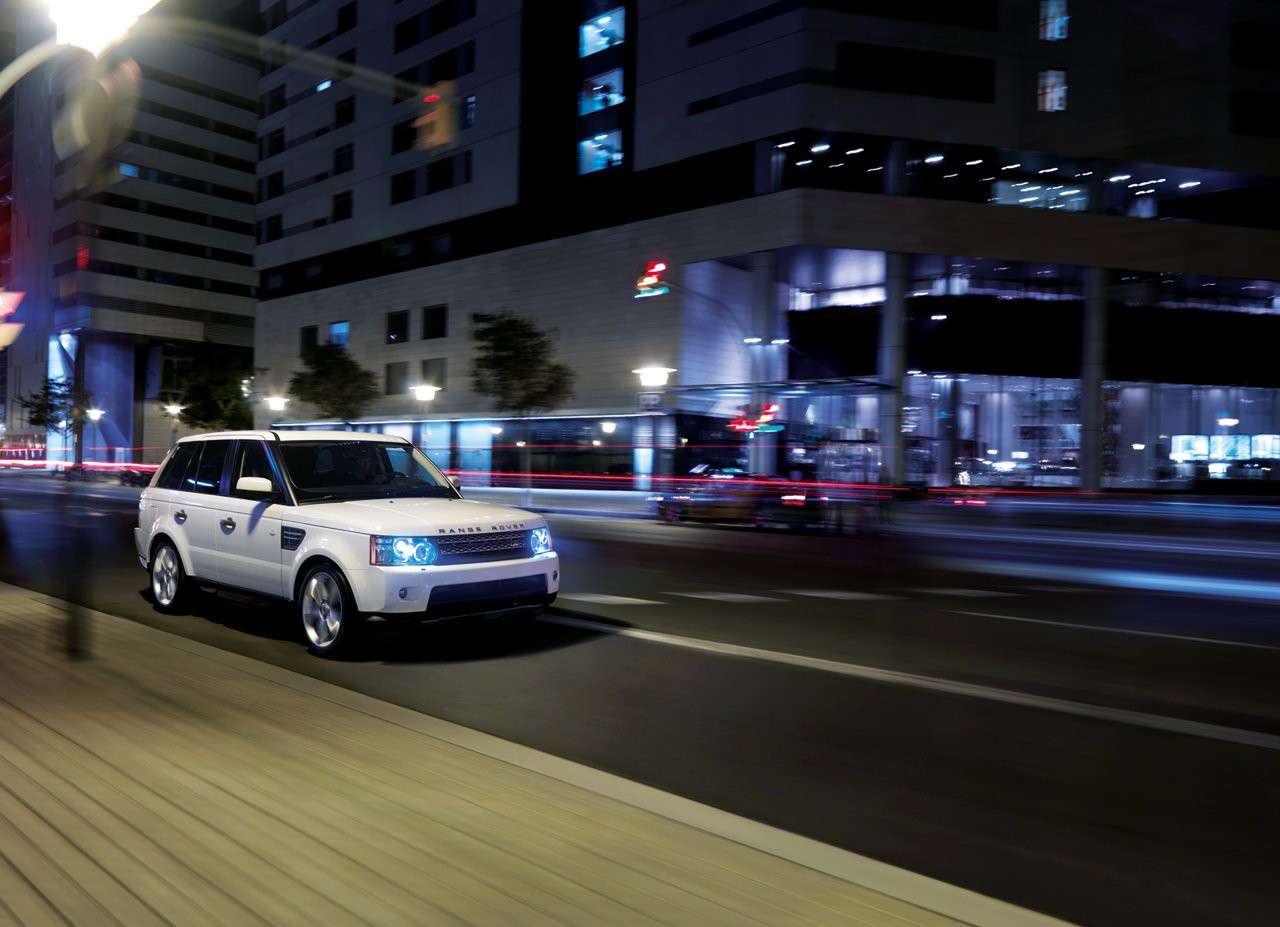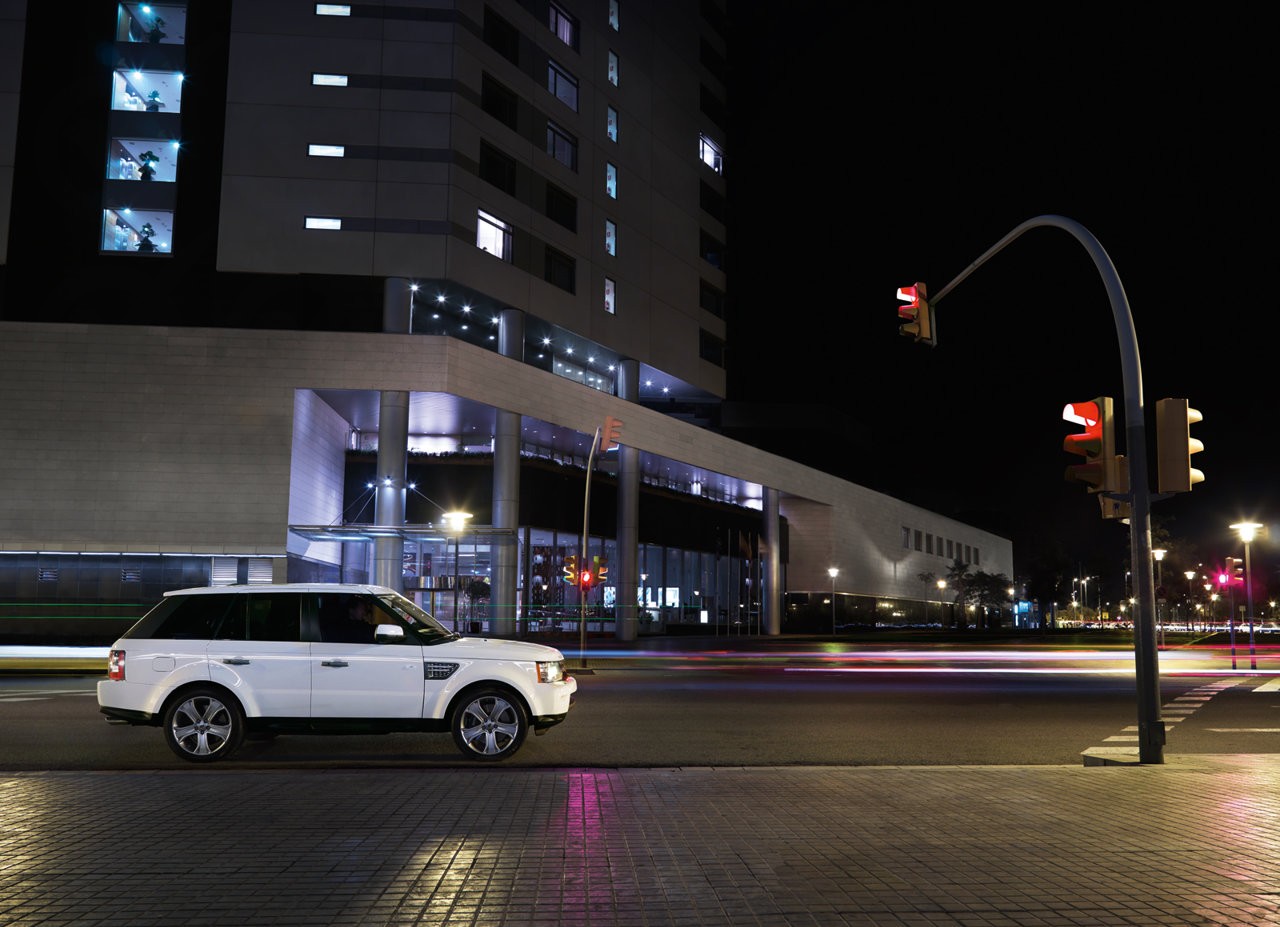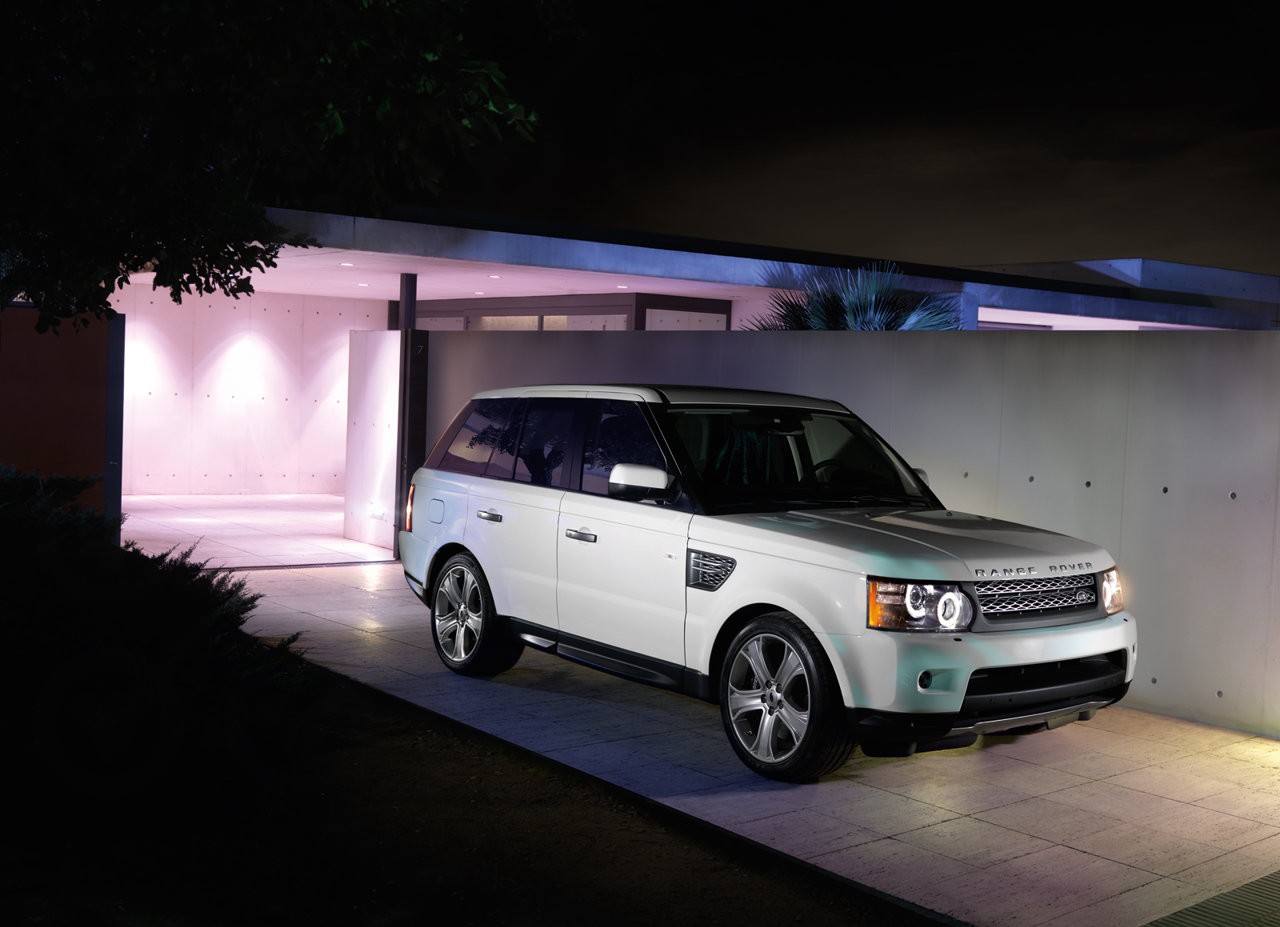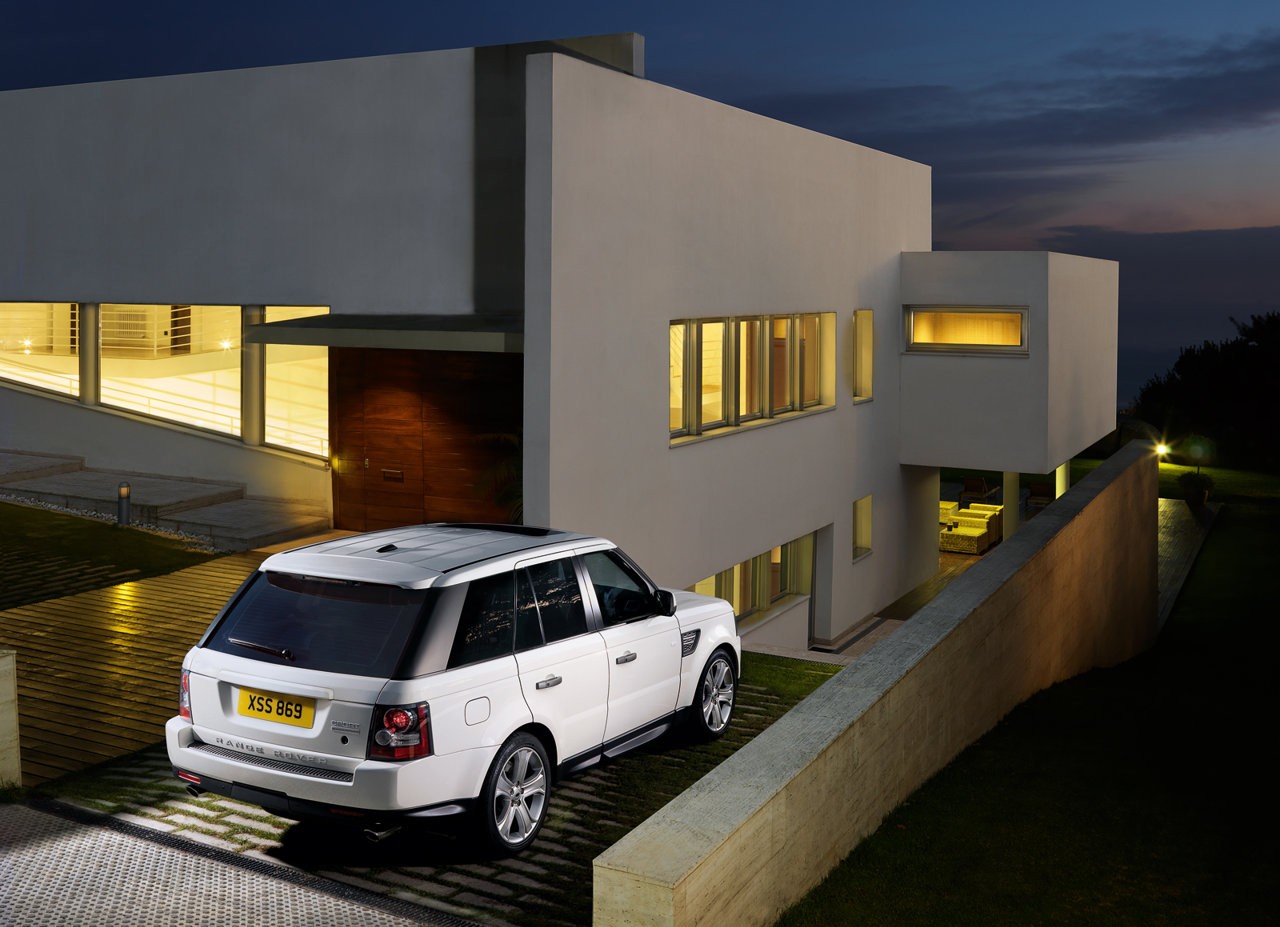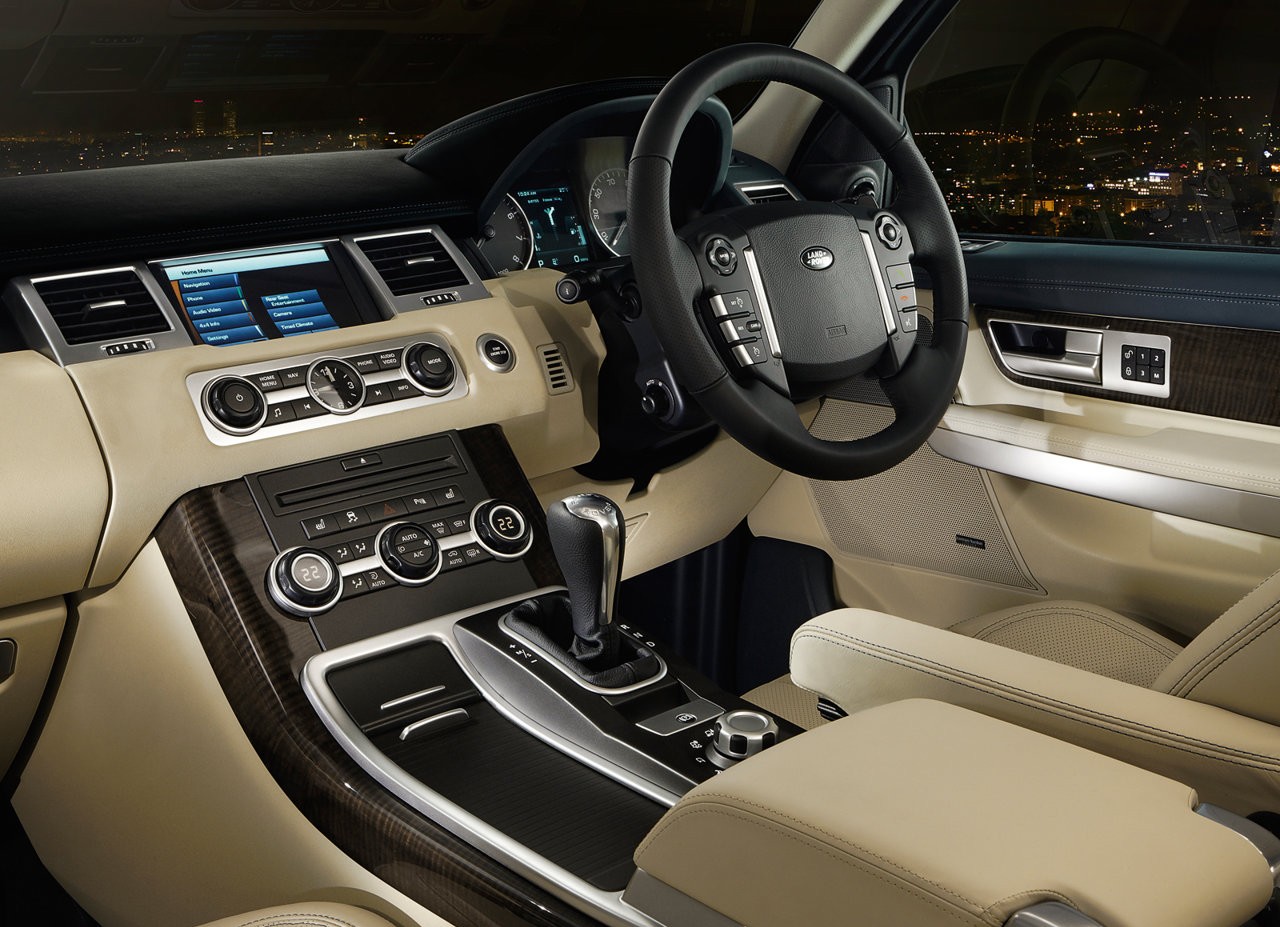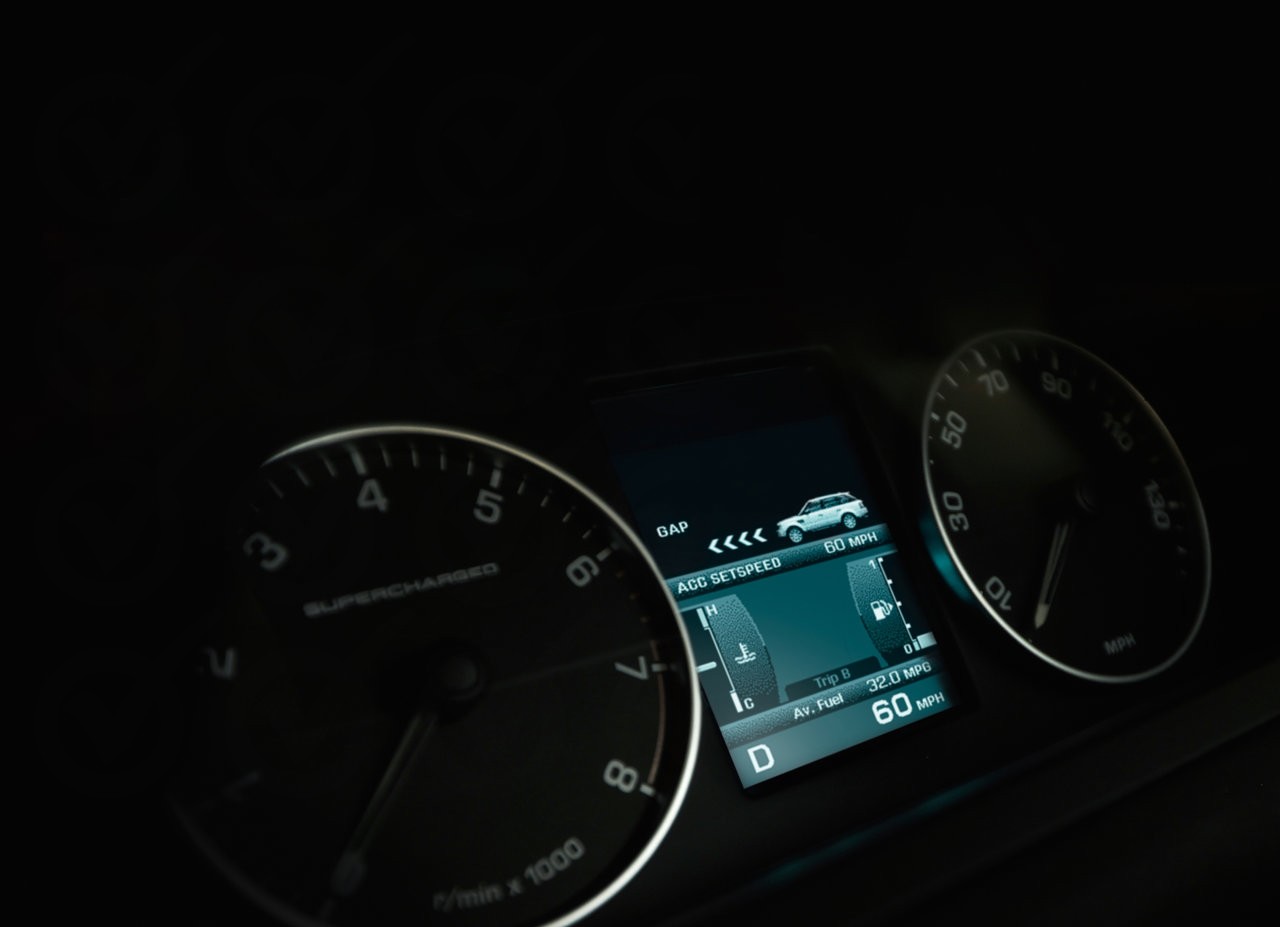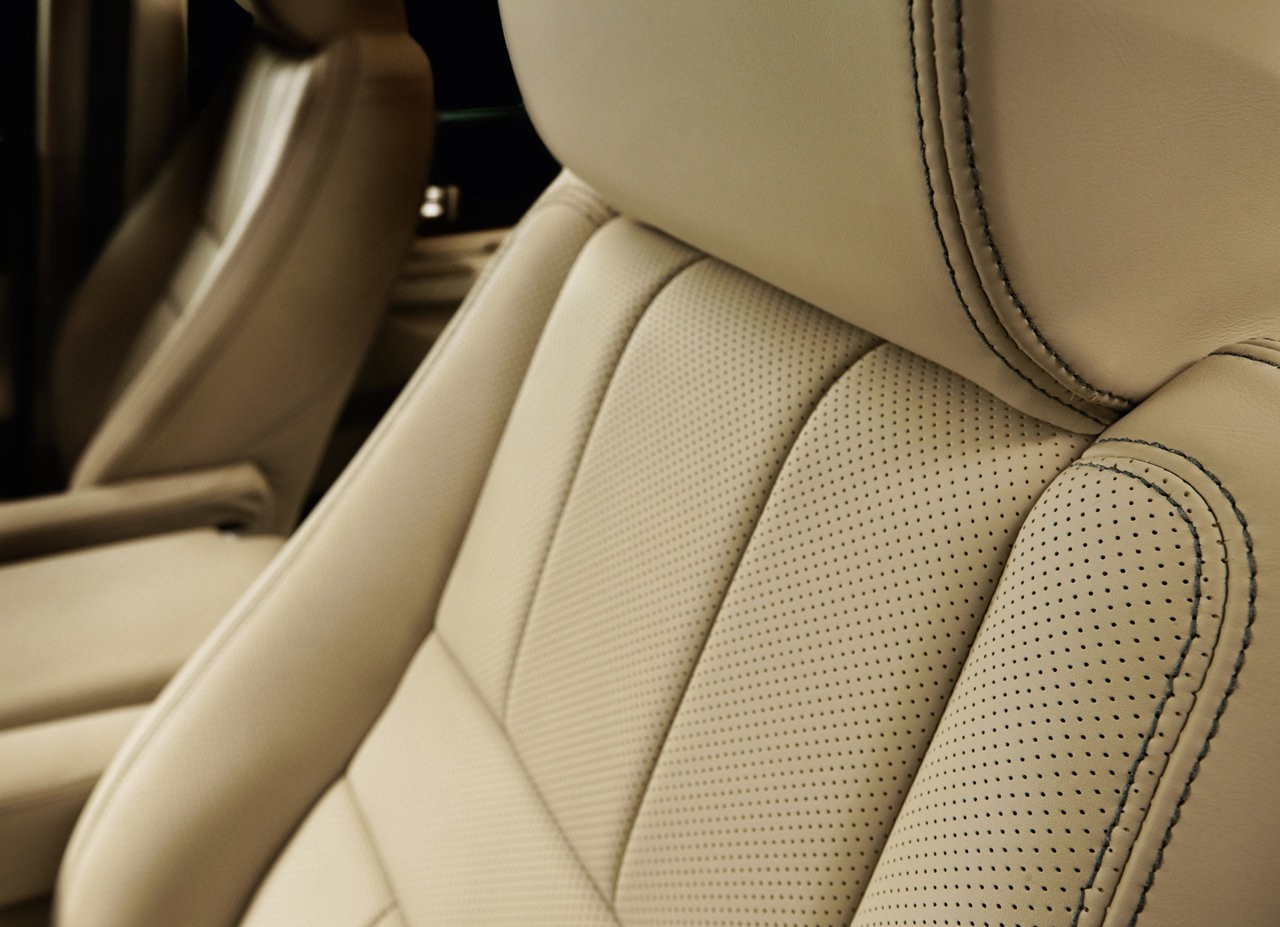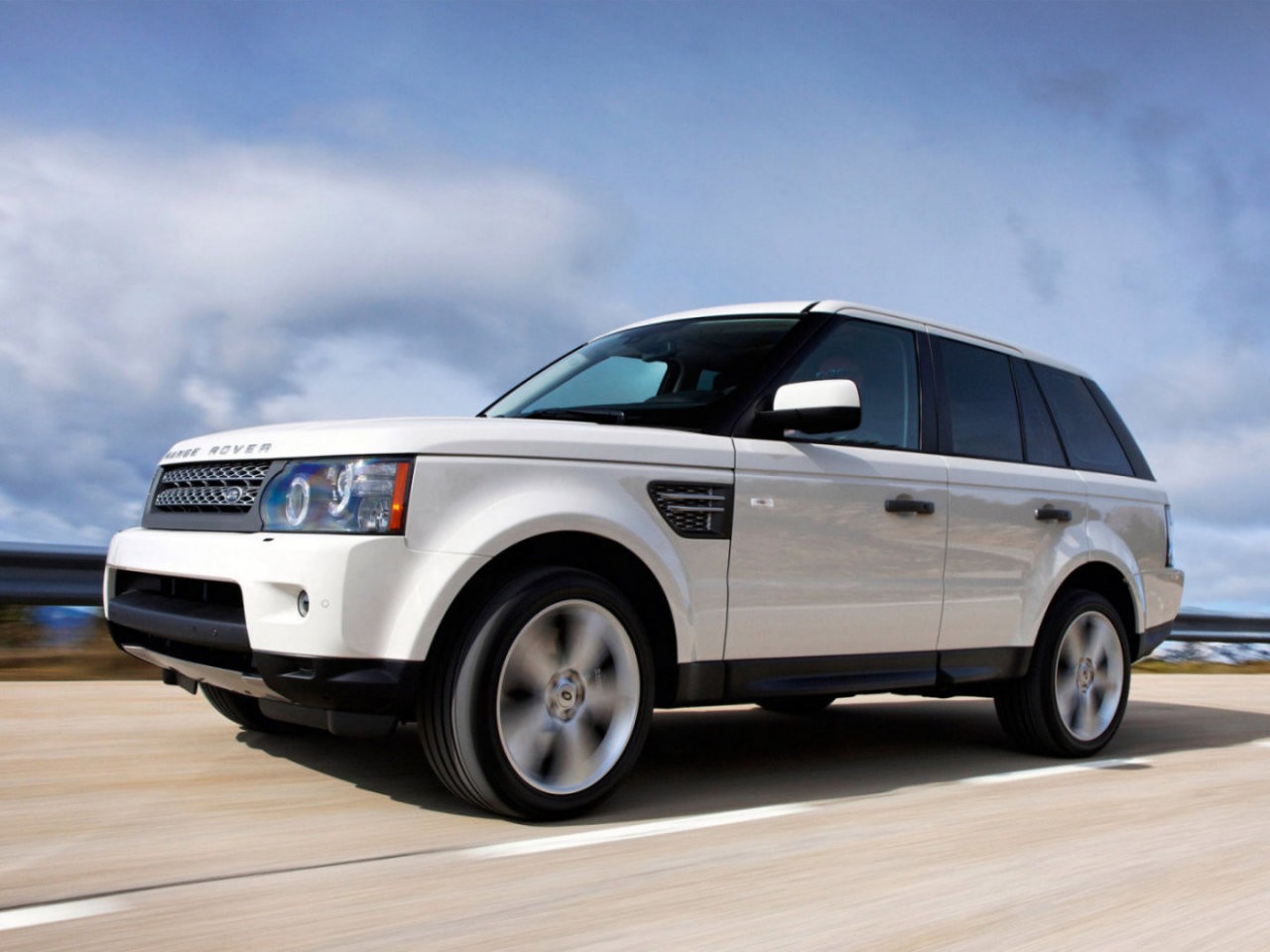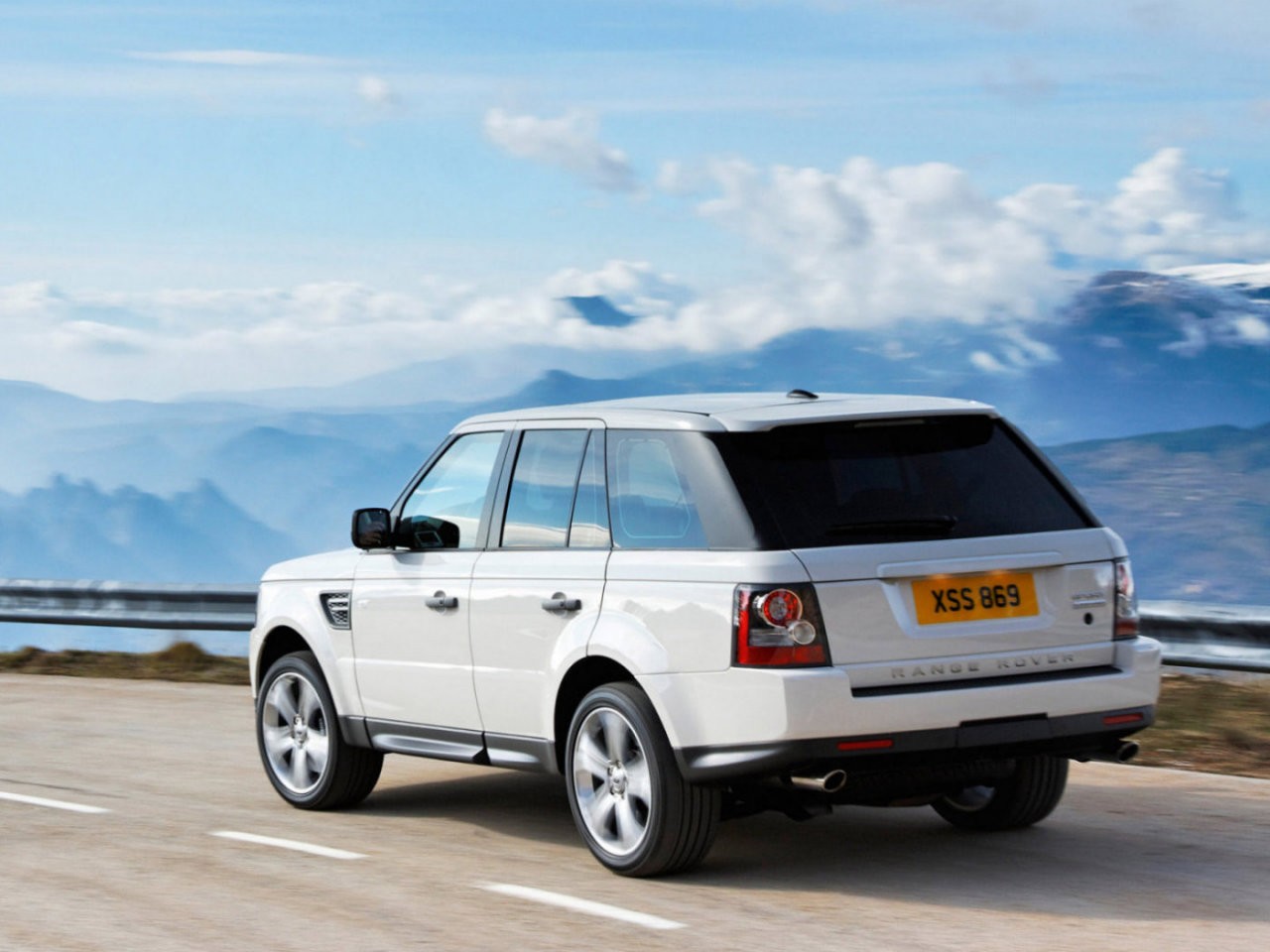
- Responsive turbo-diesel engines
- Powerful V8 petrol engines
- Comfortable front seats
- High quality interior fit and finish
- Off-road capability
- Air springs lack low-speed compliance
- Air suspension susceptible to internal leaks
- TDV6 engines susceptible to crankshaft bearing failure
- 2007-08 TDV6 engines susceptible to oil pump casing and timing belt failure
- High fuel consumption for petrol engines
Review: Land Rover L320.I Range Rover Sport (2005-09)
Overview
Released in August 2005, the Land Rover L320 Series I (L320.I) Range Rover Sport was a four-wheel drive SUV. Manufactured in Solihull, UK, the L320.I Range Rover Sport was initially available with 2.7-litre turbo-diesel, 4.4-litre petrol and supercharged 4.2-litre petrol engines.
TDV6 and AJ-V8 Engines
Of the engines,
- The 2.7-litre TdV6 engine had a compacted graphite iron block, an aluminium cylinder heads, common-rail injection (with maximum pressure of 1650 bars), piezo injectors, a single turbocharger, an air-to-air intercooler, double overhead camshafts, four valves per cylinder and a compression ratio of 17.3:1;
- Relative to the TdV6, the 3.6-litre TDV8 turbo-diesel engine differed in that it had 90 degree cylinder banks and twin variable geometry turbochargers;
The 4.4-litre AJ-V8 V8 petrol engine had an aluminium block and cylinder head, double overhead camshafts (per cylinder bank), variable cam phasing, four valves per cylinder, variable valve timing and a compression ratio of 10.5:1; and, - The 4.2-litre supercharged AJ-V8 V8 engine differed in that it was fitted with an Eaton M112 roots-type supercharger and twin air-to-liquid intercoolers, though it omitted variable cam timing.
Six-speed ZF 6HP28 automatic transmissions were fitted as standard across the range.
Dimensions
Compared to the L319 Discovery 3 on which it was based, the Range Rover Sport was 61 mm shorter (at 4788 mm), 66 mm shorter (1816 mm), 13mm wider (1928 mm) and had a 142 mm shorter wheelbase (2743 mm).
Suspension
The Range Rover Sport had independent, double wishbone suspension front and rear with air springs. Furthermore, the air springs had electronically-controlled valves which served to link adjacent air springs – in the event that a wheel on one side of the vehicle was raised when driving off-road, the pneumatic valves would open to force the adjacent wheel downwards, thereby simulating the action of a live axle.
| Variant | Years | Engine | Trans. | Peak power | Peak torque |
|---|---|---|---|---|---|
| 2.7 TdV6 | 2005-09 | 2.7-litre turbo-diesel V6 | 6sp auto | 140 kW at 4000 rpm | 440 Nm at 1900 rpm |
| 3.6 TDV8 | 2006-09 | 3.6-litre twin-turbo diesel V8 | 6sp auto | 200 kW at 4000 rpm | 640 Nm at 2000 rpm |
| 4.4 V8 | 2005-09 | 4.4-litre petrol V8 | 6sp auto | 220 kW at 5500 rpm | 425 Nm at 4000 rpm |
| Supercharged 4.2 V8 | 2005-09 | 4.2-litre supercharged petrol V8 | 6sp auto | 287 kW at 5750 rpm | 550 Nm at 3500 rpm |
4WD and Terrain Response
The Range Rover Sport had a permanent four-wheel drive system with a two-speed transfer box and an electronically-controlled Magna Steyr centre differential which apportioned torque via a multi-plate clutch pack located in the transfer case. In normal conditions, the system provided a 50:50 front:rear torque. Models with V8 engines were also fitted with an electronic rear differential.
The Range Rover Sport was also fitted with Land Rover’s ‘Terrain Response’ which enabled the driver to select one of five terrain settings: 1) general; 2) grass/gravel/snow; 3) mud and ruts; 4) sand; and 5) rock crawl. For each setting, the system adjusted the differential locking ratio, traction control system, hill descent control, anti-lock system and suspension height. The Range Rover Sport was also fitted with hill descent control.
Safety equipment
Standard safety equipment for the Range Rover Sport included dual front airbags, front side airbags, full-length curtain airbags, ABS, brake assist, electronic brake force distribution, electronic stability control, rollover stability control, traction control and front seatbelts with pretensioners and load limiters.
Features
Standard features for the Range Rover Sport 2.7 TdV6 included 18-inch alloy wheels, an eight speaker sound system with a CD player, dual-zone climate control air conditioning, leather seats, power adjustable front seats, front fog lights, headlamp washers, cruise control, automatic headlights, split and folding rear seats, a leather-wrapped steering wheel, remote central locking, power windows and heated mirrors, a height and reach adjustable steering wheel, power-operated park brake, separately opening tailgate, cargo blind, courtesy lamps, illuminated vanity mirrors, a trip computer, alarm and immobiliser.
The 4.4 V8 was further equipped with a six-disc CD player, bi-xenon headlights and rear parking sensors; the 3.6 TDV8 was similarly equipped, but fitted with 19-inch alloy wheels.
Beyond this, the Supercharged 4.2 V8 added 20-inch alloy wheels, four-piston Brembo front brake calipers, perforated leather seats, directional headlights, front parking sensors and driver memory settings (seat and mirrors). The Supercharged 4.2 V8 was also fitted with Land Rover’s ‘Dynamic Response’ hydraulically activated, computer-controlled anti-roll system which anticipated – by monitoring steering angle and lateral acceleration and counteracted body roll; the system was disengaged during off-road use for greater wheel articulation.
From August 2007, the Supercharged 4.2 V8 was fitted with a power adjustable steering column and Bluetooth connectivity.
Range Rover Sport Supercharged 4.2 V8 First Edition
To coincide with the Range Rover Sport’s release, the Supercharged 4.2 V8 First Edition was released; it was distinguished by its thirteen speaker Harman/Kardon Logic7 surround sound system with digital sound processing, auxiliary inputs (3.5mm) and MP3-compatibility, cooled storage compartment, rear seat headphone outlets and woodgrain interior trim.
December 2008: Range Rover Sport update
The Range Rover Sport was updated in December 2008 with clear lens side and tail-light indicators and a body-coloured finish for the tailgate. Inside, there was a metallic finish for the centre console, air-vent bezels and door-pull handles.
Range Rover Stormer body kit
In March 2009, a ‘Stormer’ body kit was released as an option for the 3.6 TDV8 and Supercharged 4.2 V8 variants; front parking sensors were also included in the Stormer body kit, which comprised modified front and rear bumpers, extended rear spoiler, honeycomb radiator grille, chrome exhaust tips and body-coloured side mouldings.
Brochure
Review: Land Rover L320.II Range Rover Sport (2009-13)
Overview
Released in September 2009, the L320 Series II (L320.II) Range Rover Sport introduced new engines, an upgraded interior and revised suspension and steering systems. The 2.7-litre turbo-diesel and 4.2-litre petrol engines were discontinued, replaced by a 3.0-litre twin-turbo-diesel V6 and 5.0-litre V8 petrol engines, with the latter available in naturally aspirated and supercharged forms.
Visually, the L320.II Range Rover Sport could be identified from its bumpers, two-bar grille, front headlights with LED elements and new tail-lights. Inside, there were higher quality materials, more sculpted front and rear seats, a soft-touch fascia, fewer switches and a five-inch Thin Film Transistor (TFT) driver information display.
TDV6, SDV6 and AJ133 engines
Of these engines,
- The 3.0-litre TDV6 and SDV6 diesel engines had a compacted graphite iron block, aluminium cylinder heads, common-rail injection, piezo injectors, parallel sequential turbochargers, an air-to-air intercooler, double overhead camshafts, four valves per cylinder and a compression ratio of 16.4:1. The larger turbocharger operated at low rpm and, once the engine reached 2800 rpm, the smaller turbocharger would provide compressed air to the larger turbocharger’s intake port;
- The 5.0-litre AJ133 V8 engines had an all-new die-cast aluminium block with cast-in iron liners and cross-bolted main bearing caps, spray-guided direct injection, graphite cast-iron crankshafts, forged steel connecting rods, double overhead camshafts (per cylinder bank), dual independent variable cam timing (DIVCT) and four valves per cylinder. However,
- the naturally-aspirated engines also had camshaft profile switching (CPS) on the inlet camshaft, a variable inlet manifold and a compression ratio of 11.5:1; while,
- the supercharged engines were fitted with a Roots-type twin vortex supercharger, twin water-cooled intercoolers and had a compression ratio of 9.5:1.
Across the range, the six-speed ZF automatic transmissions were revised for faster and smoother gearshifts.
Suspension
The L320.II Range Rover Sport was fitted with stiffer lower front suspension arm bushes and a revised variable-ratio steering rack.
| Variant | Edition | Years | Engine | Trans. | Peak power | Peak torque |
|---|---|---|---|---|---|---|
| 3.0 TDV6 | N/A | 2009-11 | 3.0-litre twin-turbo diesel V6 | 6sp auto | 180 kW at 4000 rpm | 600 Nm at 2000 rpm |
| Luxury, Autobiography |
2010-11 | |||||
| 3.0 SDV6 | N/A, Luxury, Autobiography |
2011-13 | 3.0-litre twin-turbo diesel V6 | 6sp auto | 188 kW at 4000 rpm | 600 Nm at 2000 rpm |
| 3.6 TDV8 | N/A, Luxury |
2009-10 | 3.6-litre twin-turbo diesel V8 | 6sp auto | 200 kW at 4000 rpm | 640 Nm at 2000 rpm |
| 5.0 V8 | N/A | 2009-10 | 5.0-litre petrol V8 | 6sp auto | 276 kW at 6500 rpm | 510 Nm at 3500 rpm |
| Luxury | 2009-13 | |||||
| Super-charged 5.0 V8 | N/A, Autobiography |
2009-13 | 5.0-litre super-charged petrol V8 | 6sp auto | 375 kW at 6000-6500 rpm | 625 Nm at 2500-5500 rpm |
4WD system
For the L320.II Range Rover Sport, the ‘Terrain Response’ system had a new sand ‘launch control’ function to reduce wheelspin, an enhanced ‘rock crawl’ mode which automatically applied the brakes – at speeds below 5km/h – to reduce lurching and hill descent control (with gradient release control).
Safety equipment
Safety equipment was largely unchanged, although a modification to the electronic stability control system would pre-emptively brake the vehicle if it was cornering too fast and enhanced rollover stability control.
Features
Standard features for the 3.0 TDV6 included 19-inch alloy wheels with four-piston front brake calipers, an eight speaker Harman/Kardon sound system with CD player, auxiliary inputs (3.5mm/iPod/USB) and MP3-compatibility, dual-zone climate control air conditioning, satellite navigation system with off-road mapping, leather seats, eight-way power adjustable front seats, cruise control, bi-xenon headlights with washers, front fog lights, Bluetooth connectivity, voice recognition, rear parking sensors, automatic headlights, rain-sensing wipers, split and folding rear seats, a leather-wrapped steering wheel, remote central locking with proximity key, power windows and heated mirrors, a height and reach adjustable steering wheel, a power-operated park brake, ambient lighting, courtesy lamps, 12 volt power outlet, trip computer, alarm and immobiliser. The 3.6 TDV8 and 5.0 V8 were further equipped with a reversing camera.
Beyond this, the 5.0 V8 Luxury featured 20-inch alloy wheels, power adjustable front seat bolsters, directional headlights, front parking sensors, steering wheel gearshift paddles, TV tuner (analogue and digital), power adjustable steering column, power folding mirrors, ambient lighting, driver memory settings (seat, mirrors, steering wheel), stainless steel tread plates and floor mats. The 3.6 TDV8 Luxury was similarly equipped, but fitted with Land Rover’s ‘Adaptive Dynamics’ electronic damper control, which utilised continually adjustable damper valves and predictive technology to optimise damper settings. There was also a ‘Dynamic’ setting within the ‘Terrain Response’ system which provided tighter body control and quicker steering responses.
The Supercharged 5.0 V8 was further equipped with a Brembo braking package with 380 mm ventilated front discs with aluminium six-piston opposed action monoblock calipers and 365 mm ventilated rear discs with single piston sliding calipers. The range-topping Supercharged 5.0 V8 Autobiography was distinguished by its thirteen speaker Harman/Kardon Logic7 surround sound system with digital sound processing and rear headphone outlet.
Range Rover Sport: 3.0 TDV6 Autobiography
In November 2010, a 3.0 TDV6 Autobiography model was introduced. Compared to the standard 3.0 TDV6, the Autobiography edition added a thirteen speaker Harman/Kardon Logic7 surround sound system with digital sound processing and rear headphone outlet, perforated leather seats with power adjustable front seat bolsters, proximity key, power adjustable steering column, driver memory settings (seat, mirrors, steering wheel) and floor mats. The 3.0 TDV6 Autobiography was also fitted with Adaptive Dynamics.
Range Rover Sport: 3.0 SDV6 with Silver Pack
In early 2013, the 3.0 SDV6 was released with a ‘Silver Pack’ which could be identified by its 20-inch ‘Style 9’ alloy wheels, Dark Atlas front grille, vent mesh, tailgate finisher and body-coloured door handles. Standard features for the Silver Pack models included front seat memory settings and Anigre gloss finish veneers for the centre console and door inserts.
Range Rover Sport: 3.0 SDV6 HSE Luxury with Black Pack
In early 2013, the 3.0 SDV6 HSE Luxury was released with a ‘Black Pack’ which could be identified by its 20-inch ‘Style 11’ alloy wheels, Atlas grille surround, Black fender vent surround and body-coloured door handles. Standard features for the Black Pack models included heated seats in Oxford Leather upholstery, power adjustable driver’s seat bolsters, driver memory settings, a centre console cooler box and grand black lacquer veneers for the centre console and door inserts.
Range Rover Sport: Supercharged 5.0 V8 with Platinum Pack
In early 2013, the Supercharged 5.0 V8 was released with a ‘Platinum Pack’ which could be identified by its 20-inch ‘Style 7’ alloy wheels, Atlas grille surround and fender vent mesh, Gloss Black lamps inners, Noble plated fender vent fingers, body-coloured door handles and chrome tailpipes. Standard features for the Platinum Pack models included heated Oxford Leather seats with contrast stitching, a front centre console cooler box and carbon fibre veneers for the centre console and door inserts.
Brochures
- Brochure: Land Rover L320.II Range Rover Sport (August 2009)
- Brochure: Land Rover L320.II Range Rover Sport (July 2010)
- Brochure: Land Rover L320.II Range Rover Sport (September 2011)
- Brochure: Land Rover L320.II Range Rover Sport (July 2012)
Related links
- Specifications: Land Rover L320.II Range Rover Sport (March 2013)
- Wikipedia.org: Land Rover L320 Range Rover Sport
